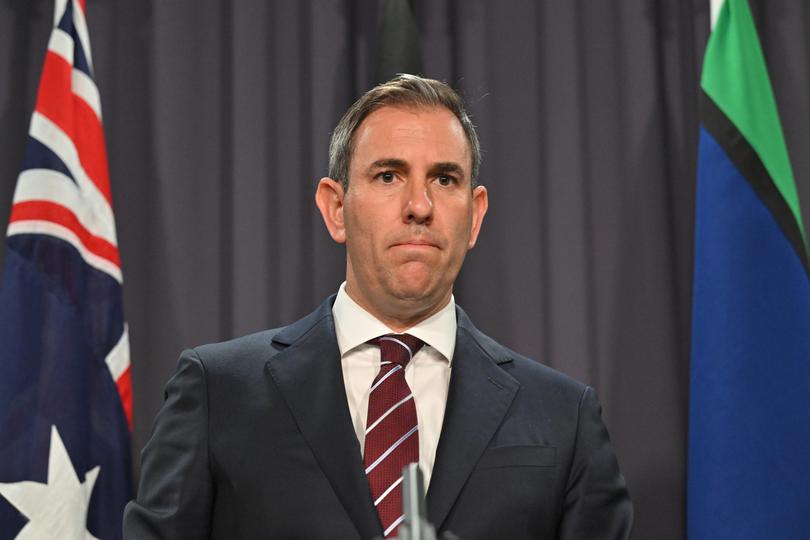MARK RILEY: Why a US rate cut would be as welcome in Australia as Arkansas

In Olympic terms, the June quarter inflation number was no gold medal result.
It wasn’t an Arnie moment.
But it wasn’t exactly Eric the Eel either.
Sign up to The Nightly's newsletters.
Get the first look at the digital newspaper, curated daily stories and breaking headlines delivered to your inbox.
By continuing you agree to our Terms and Privacy Policy.Yet it brought an almost audible sigh of relief from the ministerial wing of Parliament.
A worse result could have blown a massive hole in the Government’s central economic strategy and, without putting too fine a point on it, been the beginning of the end.
The chief objective of the May Budget was to essentially “buy” a fall in interest rates by devoting billions towards lowering the costs of electricity, childcare, training and more.
It was all about getting inflation down. If inflation now went up, the Government knew it could be on its way out.
The headline result was in line with market predictions at 3.8 per cent.
But, most importantly, it was also what the Reserve Bank expected and the underlying rate of 3.9 was just a tick above the RBA’s assumption.
Fears of a possible interest rate rise from next week’s meeting of the central bank instantly disappeared and the stock market rallied.
Treasurer Jim Chalmers seemed relieved but not relaxed.
He conceded in his characteristically alliterative vernacular that inflation was proving to be “sticky and stubborn”.
It is certainly that.
How to unstick it over the next three months is a big challenge.
And it doesn’t seem the question is what more the Government can do but rather whether what it has already done will have an adverse impact.
The universal $300 electricity bill relief should ensure the power component of the inflation basket goes down.
But some economists warn the stage three tax cuts could negate that and then some.
They will put more money into people’s pockets with each pay packet — money they might go straight out and spend.
Retail trade went up half a per cent in June.
People in the grips of a cost-of-living crisis still went out and spent in the end-of-financial year sales like it was Christmas.
That has some economists worried.

People don’t believe they have a lot at the moment but they’re still willing to spend what they’ve got if the price is right.
It is what French philosopher Bernard Steiger would call “capitalist consumerism”.
It’s our irrational desire to buy the latest shiny, Instagrammable thing and damn the consequences.
There isn’t a great deal a Treasurer can do about that.
Australia’s rate of household savings is low in comparison to the OECD average. Some of that is spending, but most is the increased proportion of income being directed towards mortgage repayments as interest rates have cycled up.
But bigger factors than household spending will impact the Australian economy in the current quarter. Despite all the political argy-bargy over the effects of “homegrown inflation”, those greater influences will almost entirely be global.
They could also — at last — be positive.
The first sign of that came on Thursday with an optimistic outlook from the chair of the US Federal Reserve, Jerome Powell.
Americans read the inflation rate in the same way they read the Olympic Games medal tally — differently to the rest of the world.
Their yardstick is not the consumer price index but the personal consumption expenditure price index. Why use one word when you can use three, hey?
At 2.5 per cent, the PCE price index is closing in on the US Fed’s 2 per cent target.
That encouraged Powell to declare a “strong confidence” that the target would soon be achieved.
Then came the big statement. Powell said that as long as the American labour market held up over the next month: “A reduction in our policy rate could be on the table as soon as the next meeting in September.”
A US rate cut in September would be as welcome in Australia as it would be in Arkansas.
It would increase business and investor confidence and lift the value of our dollar.
It would also heap pressure on other central banks, including our own, to follow suit.
There are a lot of other variables in play, but a US rate cut would be a strong sign of global recovery and a welcome development for Jim Chalmers and Anthony Albanese.
It would increase the chances of interest rates here falling at the end of the year or early next year, in line with their Government’s Budget strategy.
And it would give them a much better chance of doing an Arnie rather than an Eric at the expected May election.

